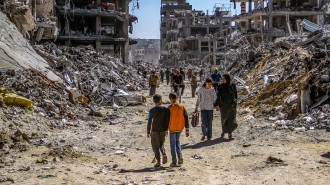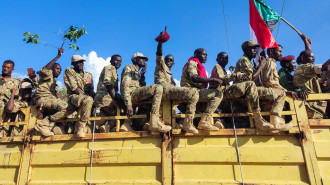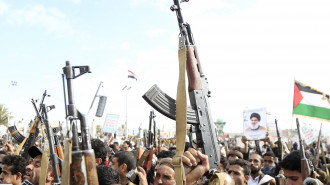Palestinian children on the frontline of the intifada
The third month of the uprising began with the killing of Palestinian teenager Maamoun al-Khatib, 16, after he attempted to stab an Israeli soldier near a Bethlehem settlement in the occupied West Bank.
The Israeli escalation and the lack of official Palestinian support has not stopped unorganised individual attacks carried out by children and young people, which analysts believe distinguish the current uprising from previous ones.
During the first (1987-1993) and the second (2000-2005) uprisings, children took part mainly by throwing stones at Israeli forces, or helping wanted Palestinians move around the streets.
The ages and backgrounds of the young people involved in resistance operations in the current uprising show a great transformation, as most of the 108 martyrs have been under 20-years-old.
Of the 24 children killed since the beginning of the current uprising, 17 were killed by Israeli forces on suspicion of attempted attacks or stabbings, as happened with Khatib, while eight were killed during clashes and tear gas attacks.
Lost childhood
| The Israeli escalation and the lack of official Palestinian support could not deter unorganised attacks by individuals |
They argue children should be left to enjoy their childhoods and that the Palestinian resistance will wait for them.
Others claim the Palestinian mentality accepts children's participation in attacks.
They point fingers at the children's families, as well as the media and society.
They attack those who portray the killing of children as a result of the uprising, while ignoring the occupation as the main cause of their death.
Children take part in resistance operations for three reasons:
First, because the crimes committed by Israeli forces continue to escalate, as they continue to kill Palestinians and demolish their homes.
Second, the Palestinian leadership had failed to intervene and stop the killings or try to protect Palestinian citizens.
Third, Palestinian factions are politically isolated and have been unable to take part in the resistance.
Israeli soldiers have been circulating leaked pictures and videos showing the killings of Palestinians and the mutilation of their dead bodies in an attempt to intimidate others and stop them carrying out resistance operations.
One leaked video showed an Israeli interrogation officer harassing and yelling at Palestinian child prisoner Ahmed Manasra.
However, this has failed to intimidate Palestinians and has outraged them instead. Children and young people have reacted by carrying out stabbing attacks near Israeli checkpoints.
A helpless leadership
The Palestinian leadership has stood helpless and unable to do anything about these daily killings.
Divisions between the people and the leadership have been increased by Israeli military operations in refugee camps, hospitals and universities, that have killed, wounded or led to the arrest of Palestinians.
Professor Ahmad Jamil Azem from Birzeit University argues that the Palestinian leadership is deeply confused and unable to offer its people a clear alternative.
| Losing its ability to take action, the Palestinian leadership has adopted the role of human rights organisations, by documenting the crimes committed by the Israeli occupation |
On 24 November, President Mahmoud Abbas submitted five files on Israel's crimes to US Secretary of State John Kerry when they met in Ramallah. This illustrates how the Palestinian Authority's role is limited to documenting and filing complaints.
The Israeli government is aware that the Palestinian leadership does not support attacks by individuals, which is why it has not imposed sanctions on the PA, as it usually does.
However, the Palestinian leadership is not the only helpless party.
The actions of Palestinian factions has been limited to printing pictures and posters of martyrs, in a last attempt to remain present in the scene.
Martyr children
The house of Alaa Hashash, a Palestinian child who was killed on 23 November after allegedly trying to stab an Israeli soldier at the Hawara checkpoint, reflects the current situation for Palestinians.
Located in the Askar al-Jadeed refugee camp near Nablus, there are posters of the martyred child on the walls of the small modest house.
"After hearing many rumours, I received a call from an Israeli intelligence officer asking me to come to the Hawara checkpoint, where I was searched three times, including once without my clothes on," Alaa's father told al-Araby al-Jadeed.
"After being searched and refusing to drink the coffee offered by the officer in his room, one of the soldiers told me, 'I regret to inform you that your son tried to carry out a stabbing attack so the soldiers killed him. I apologise for killing him, I know he was a child, but we were instructed to do so'."
"I felt the whole world collapse around me," the father said. "I asked him, 'Why didn't you just injure and arrest him? Why did you have to kill him?' And he replied, 'We had orders to shoot'."
"Just like any other child, my son was hurt by Israel's crimes, and the absence of the leadership and the factions means no one is left to intervene but children."
| Read also: Jerusalem ghettos: Transforming Palestinian neighbourhoods into Israeli prisons |
The day before Alaa's death, another child from the same camp bled to death at the Hawara checkpoint after Israeli forces stopped a Red Crescent ambulance reaching her.
On the night before she was killed, 16 year-old Ashraqat Taha Qatanany asked her family for a poisoned knife. They assumed she was only voicing her anger just like other teenagers.
On 23 November, 14 year-old Hadeel Wajih Awad was shot dead and her 16 year-old cousin Nourhan injured after allegedly attempting to carry out a stabbing attack in Occupied Jerusalem.
Hadeel's brother, Mahmoud Awad, was killed on 29 November 2013 in clashes with Israeli forces at a north Jerusalem refugee camp.
Islamic affairs expert Alaa Rimawi of the Jerusalem Centre for Israel Studies (JCIS) told al-Araby al-Jadeed that women and children have been forced to defend themselves because the Palestinian leadership has failed to protect the people, and the factions have became weak.
"Questions should be addressed to the leadership, which has more than 100,000 security members in the West Bank and is consuming nearly 44 percent of the general budget," he said.
"The Israeli occupation is responsible for the killing of the children, and the PA is responsible for the lack of a clear approach, while the absence of the PLO is to blame for the current state of confusion," Rimawi concluded.
This is an edited translation from our Arabic edition.

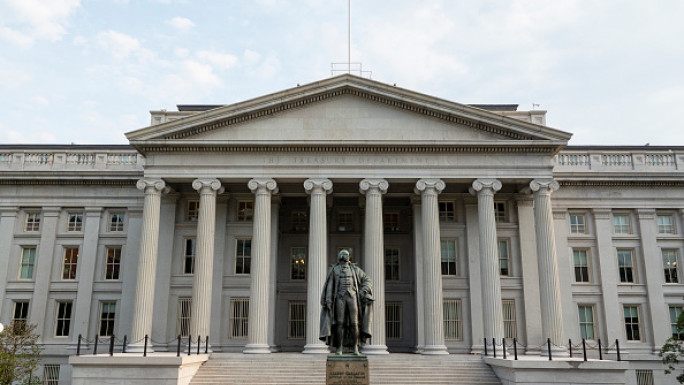
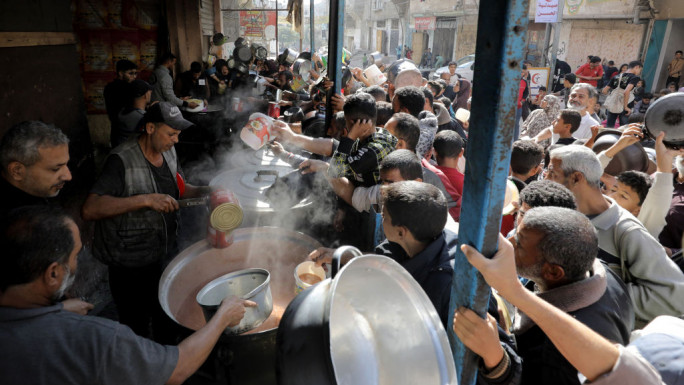


 Follow the Middle East's top stories in English at The New Arab on Google News
Follow the Middle East's top stories in English at The New Arab on Google News
